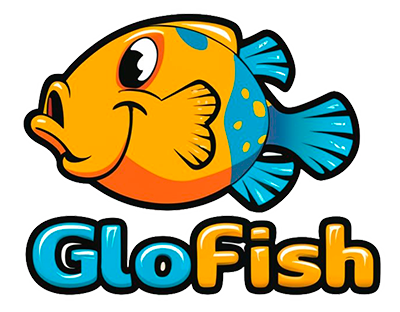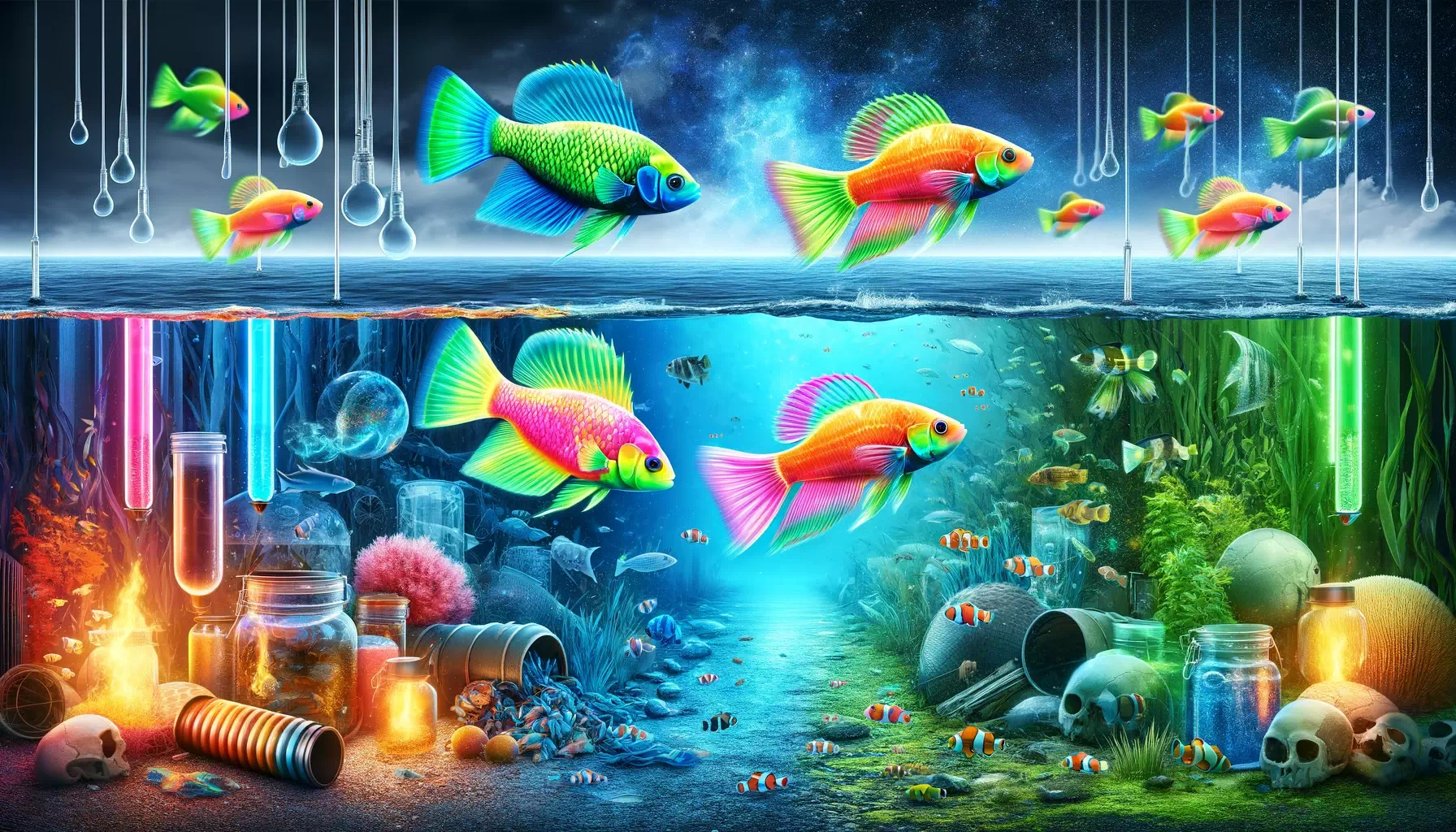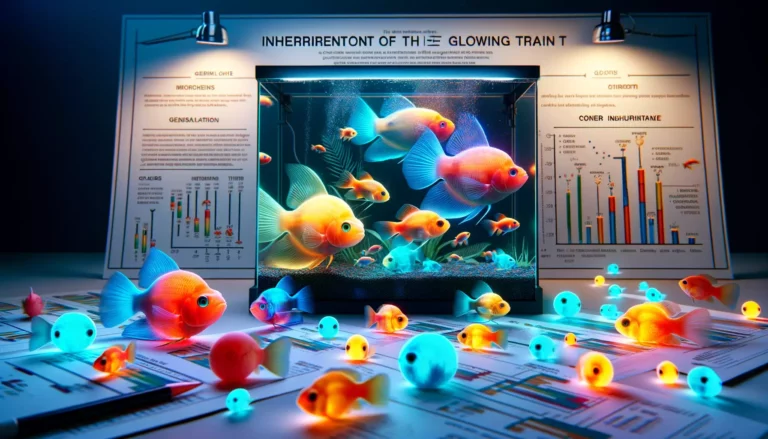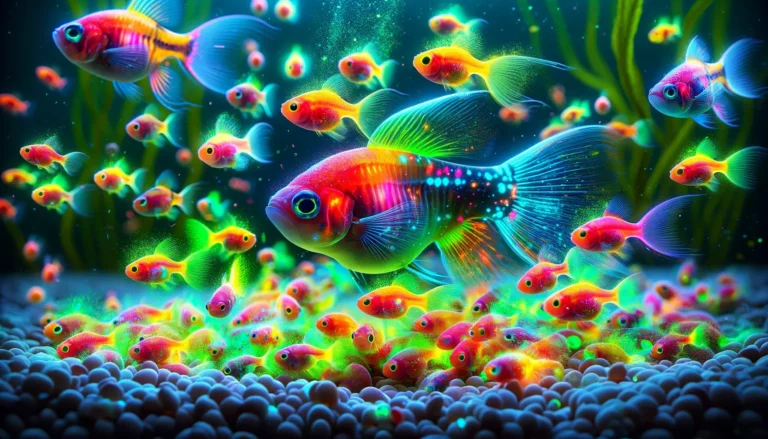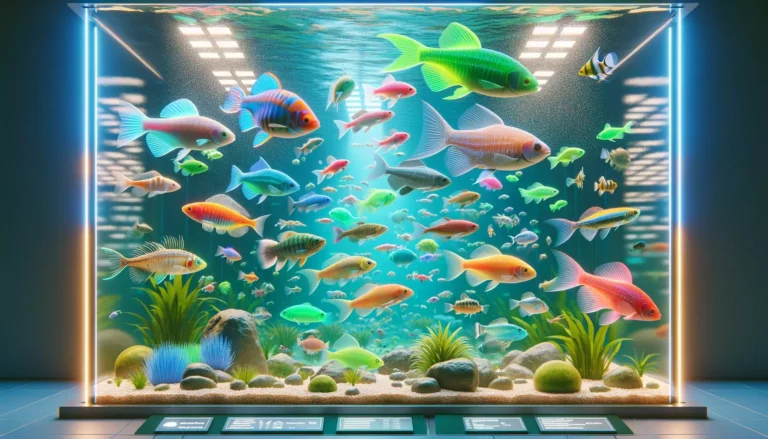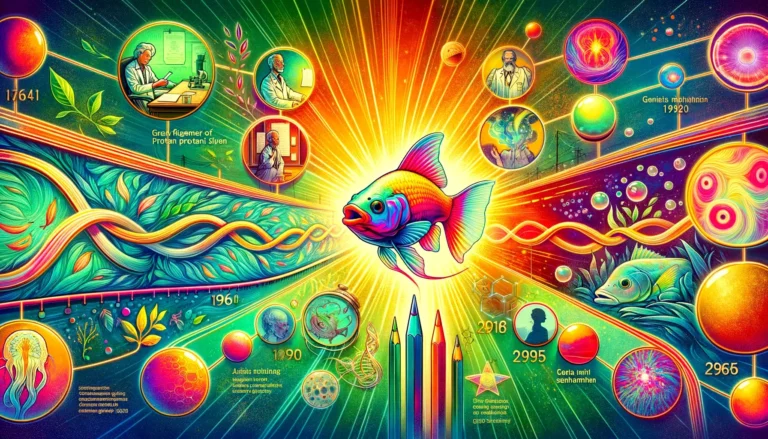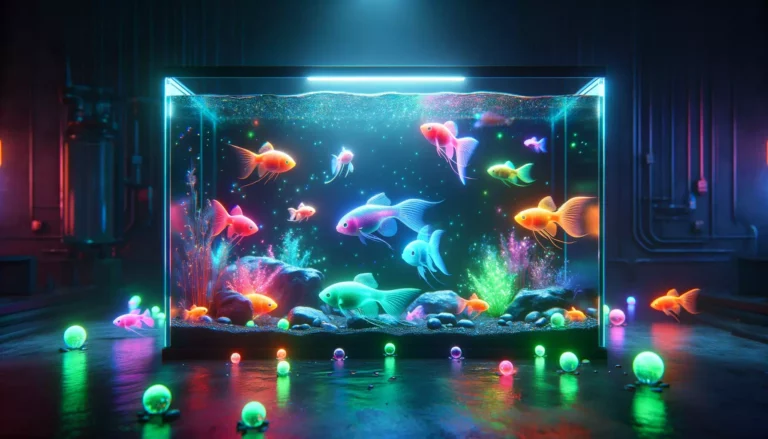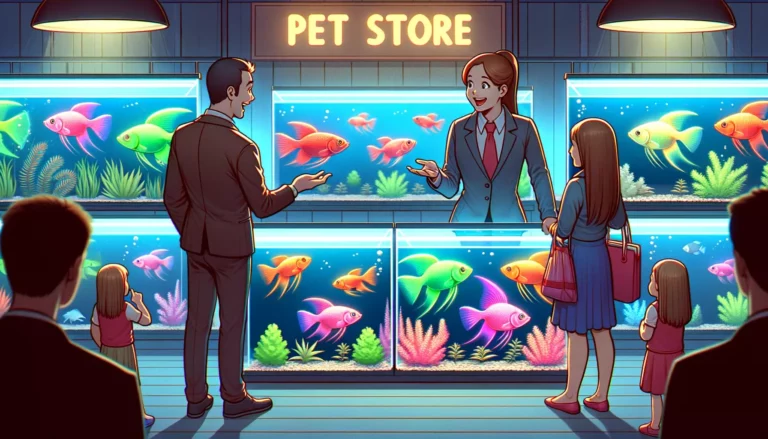Story behind the creation and introduction of GloFish into the market
The journey of GloFish began with a noble cause. It aimed at creating a fish that could detect environmental pollution. This was achieved by inserting a gene that made the fish glow in the presence of pollutants. This gene, originating from jellyfish and sea anemones, allowed the GloFish to act as a bio-indicator.
Scientists initially didn’t plan for GloFish as ornamental pets. Their goal was environmental protection. The glowing feature was meant to signal the presence of toxins. The main idea is that GloFish were designed as environmental sentinels. However, the vibrant colors caught the public’s eye. This led to their introduction in the aquarium trade.
The environmental application of GloFish remains an important aspect. They can potentially offer a visually striking method to monitor water quality. Their use in research extends to studying gene expression and development. However, their role as pets overshadowed these initial purposes.
Creators of the First GloFish: Scientists and Their Research Backgrounds
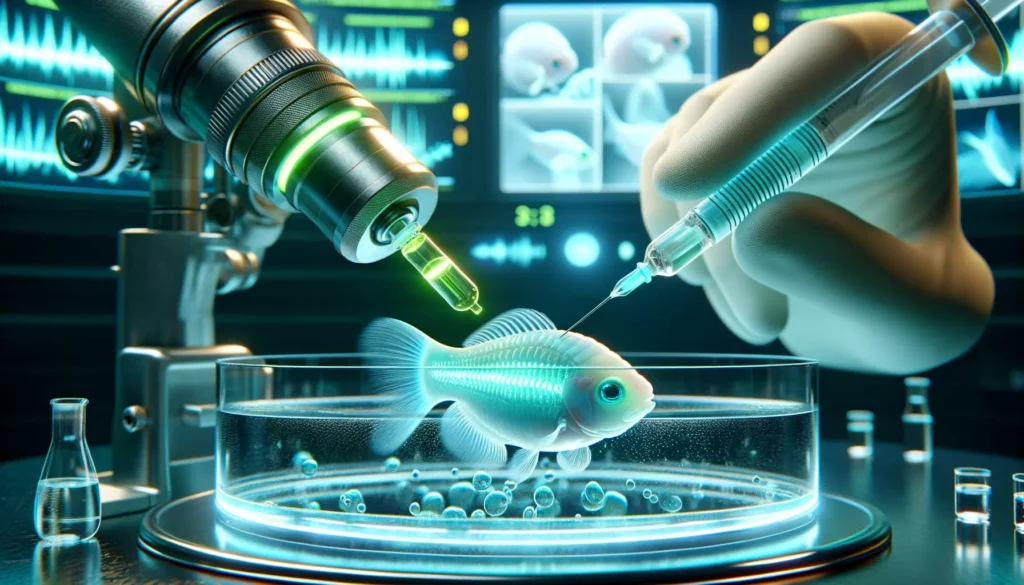
The creation of the first GloFish is credited to a team of scientists. Dr. Zhiyuan Gong and his colleagues at the National University of Singapore led this innovation. In the late 1990s, they embarked on this groundbreaking research.
Dr. Gong specialized in molecular biology and genetics. His team’s expertise lay in these fields too. They focused on understanding and manipulating genetic material. Their primary goal was to create a fish that could signal environmental toxins.
The team’s background in genetic research was pivotal. They applied their knowledge to create a fish with unique properties. This work laid the foundation for future genetic modifications in animals. Their success opened doors to new possibilities in genetic engineering.
Genetic Modifications in GloFish: Techniques and Mechanisms
Creating GloFish involves intricate genetic engineering. The process starts with the insertion of a fluorescent gene. This gene is typically from jellyfish or sea anemones. It’s responsible for the fish’s vibrant glow.
The method used is microinjection. Scientists inject the fluorescent gene into fish embryos. This has to be done at a precise developmental stage. The goal is to ensure that the gene integrates into the fish’s genome.
The fluorescent gene integrates into the fish’s DNA. This causes the fish to exhibit bright colors under certain lights. The colors vary based on the gene used. They can range from green, red, to orange. This process is a remarkable example of biotechnology’s capabilities.
Each color of GloFish comes from a specific type of fluorescent protein. Green GloFish use a protein from jellyfish. Red and orange varieties use proteins from coral species. This diversity showcases the potential of genetic modification.
Market Introduction and Public Response to GloFish

GloFish made a splash in the U.S. market in late 2003. They were the first genetically modified animals available as pets. Yorktown Technologies obtained the rights to market them. Their debut stirred a mix of excitement and concern.
The vibrant colors of GloFish attracted many aquarium enthusiasts. They were seen as a novelty in the world of ornamental fish. The novelty factor played a big role in their popularity. However, some expressed concerns about genetic modification. The main point here is that GloFish received a mixed reception, balancing intrigue and ethical concerns.
Despite the debates, GloFish sales soared. They became a staple in pet stores across the country. Their ease of care added to their appeal. But the controversy surrounding their genetic modification lingered. Some states, like California, initially banned their sale.
Ethical Considerations and Controversies in GloFish Creation and Sale
The creation and sale of GloFish sparked significant ethical debates. One major concern was the impact of genetic modification on animal welfare. Critics argued that altering an animal’s genetic makeup for aesthetic purposes was unethical. They worried about potential health issues in modified fish.
Another controversy centered around environmental concerns. There was fear that GloFish could escape into the wild. If they bred with native species, it could disrupt ecosystems. The key ethical concern is the potential environmental impact and animal welfare issues posed by GloFish.
Regulatory bodies also faced challenges. They had to decide how to classify and regulate GloFish. Were they pets, or were they genetically modified organisms requiring stricter oversight? This debate highlighted the need for clear guidelines in biotechnology.
The sale of GloFish also raised broader questions about genetic engineering. It opened discussions about the limits and responsibilities of altering life forms. Public opinion remained divided. Some saw GloFish as a scientific marvel. Others viewed them as a step too far in genetic manipulation.
Regulatory Challenges Faced by GloFish Prior to Market Approval
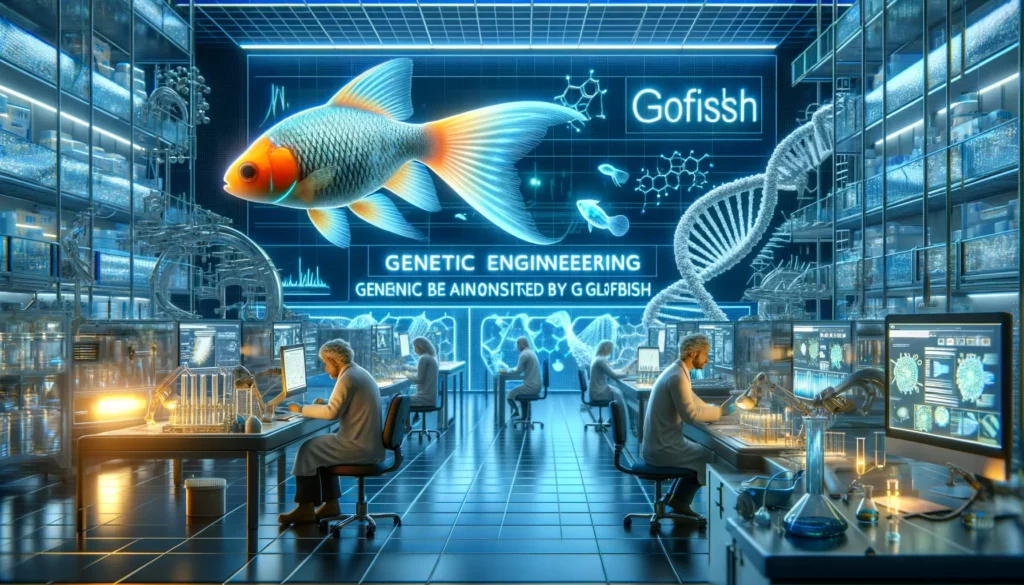
Before GloFish could enter the market, they faced significant regulatory hurdles. The U.S. Food and Drug Administration (FDA) played a key role. Initially, there was uncertainty about which agency should oversee their regulation. GloFish were unique, being genetically modified pets.
The FDA decided not to regulate GloFish as it does for genetically modified food. Their reasoning was that GloFish posed no threat to the food supply. The main regulatory challenge was determining the appropriate oversight for genetically modified pets.
State-level regulations also posed challenges. Some states, like California, were hesitant to allow GloFish sales. They raised concerns about environmental impacts. The fear was that escaped GloFish could affect local ecosystems. This led to a ban in California, which was later lifted.
The introduction of GloFish tested the regulatory frameworks for genetically modified organisms. It highlighted the need for clear policies in this evolving field. The successful market introduction of GloFish set a precedent for future genetically modified pets.
Impact of GloFish Introduction on Ornamental Fish Industry and Biodiversity
The introduction of GloFish had a significant impact on the ornamental fish industry. They brought innovation and excitement to the market. Their unique, vibrant colors appealed to both seasoned and new aquarium enthusiasts. This novelty factor helped expand the market.
However, the introduction of GloFish raised concerns about biodiversity. Critics worried about their potential release into the wild. If GloFish were to breed with native species, it could upset ecological balances. The main concern is the potential environmental impact of GloFish on biodiversity.
Research suggests that GloFish are unlikely to survive in the wild. Their bright colors make them easy targets for predators. This reduces the risk of establishing invasive populations. Nonetheless, the debate about their environmental impact continues.
GloFish also sparked discussions about bioethics in the ornamental fish industry. They challenged traditional views on pet breeding and genetic modification. The industry had to consider the ethical implications of selling genetically altered pets.
In summary, GloFish have influenced the ornamental fish market and raised important questions about biodiversity and ethics in pet trade. Their introduction continues to influence how we view and regulate genetically modified organisms in the pet industry.
Environmental Concerns Related to GloFish and Ecosystem Interactions

Environmental concerns regarding GloFish center around their potential impact on ecosystems. The primary worry is about their escape into the wild. In a new environment, GloFish could compete with native species for resources. They might also become prey due to their bright colors.
Studies indicate that GloFish are unlikely to survive in harsh wild conditions. Their fluorescent colors make them more visible to predators. This reduces the risk of them establishing invasive populations. The main environmental concern is the potential ecological impact if GloFish escape into natural habitats.
Regulations are in place to mitigate these risks. In the U.S., GloFish are bred in closed systems. This minimizes the chances of them entering natural water bodies. The sale of GloFish is also banned in some regions, like the European Union, due to these environmental concerns.
Despite precautions, the debate on their environmental impact continues. Conservationists emphasize the importance of responsible ownership. They advocate for preventing accidental releases of GloFish into the wild.
Influences of GloFish Development on Genetic Engineering Advancements
The development of GloFish has significantly influenced the field of genetic engineering. It marked one of the first instances of genetically modified animals being sold as pets. This opened doors to new possibilities in genetic modifications for aesthetic purposes.
GloFish have become a model organism in scientific research. They are used to study gene expression and developmental biology. Their development has advanced our understanding of genetic engineering techniques.
The success of GloFish has also encouraged further exploration in biotechnology. It has shown the commercial viability of genetically modified organisms beyond agricultural uses. This has sparked interest in developing other genetically modified pets.
The techniques used in creating GloFish are being applied in other areas. This includes medical research and the development of new biotechnology applications. The GloFish story is a testament to the potential and versatility of genetic engineering.
Global Reception and Regulations of GloFish in International Markets

GloFish have received a mixed reception globally. While popular in the United States, their reception in other countries varies. This is largely due to differing regulatory landscapes.
In the European Union, the sale of GloFish is banned. This decision stems from concerns about genetic modification and environmental impact. The global reception of GloFish is shaped by varying regulations and cultural attitudes towards genetic modification.
In Asia, the response has been more positive. Countries like Japan and China show interest in genetically modified ornamental fish. However, regulations still play a role in controlling their sale and distribution.
This varied reception highlights the global debate on genetically modified organisms. It reflects cultural differences in the acceptance of genetic engineering. The case of GloFish serves as an example of how biotechnology is received differently around the world.
In summary, GloFish’s introduction has impacted global markets differently, shaped by varying regulations and cultural attitudes towards genetic engineering. Their story illustrates the complexities and diverse viewpoints surrounding genetically modified pets in the international context.
